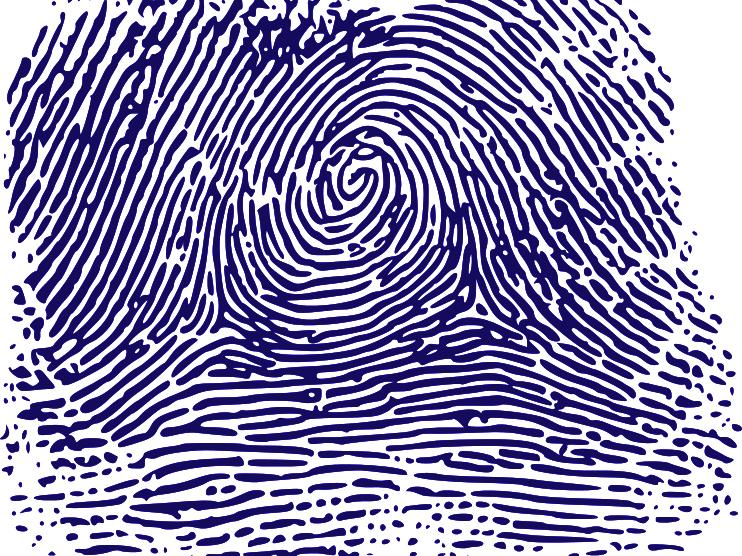(Fingerprint image, courtesy of WikiMedia Commons)
Discussion of groundbreaking forensic research from biochemistry major Michaela Gysbers is among the sessions on Quest day looking to make an imprint on audiences.
Titled “Exploring the Use of Latent Fingerprints to Differentiate Female and Male Subjects,” Gysbers’ session is part of a suite of related presentations starting at 11 a.m. in 175 Shineman Center (and virtually via Zoom). That session joins other Quest presentations, poster sessions and performances April 6 on the main SUNY Oswego campus celebrating scholarly and creative activities.
The research, led by Oswego professors Shokouh Haddadi and Vadoud Niri, focuses on analyzing the chemical composition of the sweat and secretions in latent fingerprints to determine things like the gender, health and nutrition of the one who left them behind.
“Part of the sweat contains amino acids, and amino acids are the building blocks for proteins in the body,” said Gysbers, who in addition to her biochemistry major plans to graduate with minors in forensic science and biocultural anthropology this May. “We’re looking at individual amino acids and trying to determine the concentration of individual amino acids, and using those to differentiate between males and females.”
Gysbers joined the research team last summer, adding her contribution to a project that has been ongoing since 2015. Since then, she has worked alongside Haddadi, Niri and graduate student Shelby Barnes.
“I have just always been super interested in forensics, probably starting since middle school, and I knew that’s what I wanted to do,” said Gysbers. “I thought this project just sounded super cool because it was something a little bit different from what I’ve done in the past, and it seemed like it would be a very helpful tool for investigators if it works.”
Haddadi said she was impressed with Gysbers’ willingness and ability to learn on the job, given the high standards and advanced instrumentation of the research.
“She really takes everything quickly,” said Haddadi. “When I explain it once, she takes it and she did what I asked her and she was successful.”
Gysbers also expressed her satisfaction with the efforts of herself and her team to iterate on their work and make their process more efficient.
“We’ve been working on this together since the beginning of last summer and we have come so far,” said Gysbers. “We’ve been working to … improve our methods so that it works better and it’s more consistent. And I think right now we are finally at the stage where we can confidently say, like, this method works and we are getting some good data from it.”
Career preparation
Gysbers said that this research, the capstone of her biochemistry degree, has been illuminating for her as she looks ahead to her further education and to her future career.
“I think it has prepared me really well, because it gave me a chance to work with new techniques and new instruments that I probably would not have gotten a chance to,” said Gysbers. “It gave me an idea of like, ‘do I want to go down the route of becoming an expert in fingerprints, or do I want to try to look and try to focus my area somewhere else?’ So I think that was pretty eye-opening for me.”
Ahead of her presentation, Gysbers applauded Quest both as an opportunity for students to demonstrate their passion and expertise in their respective fields, and as a potential career advancer.
“It’s really great to see all the great and new work that’s being done here and how we can connect to other scientific communities,” said Gysbers. “When you present your research, you don’t know who wants to come and listen to you, and those people might be able to connect you with other people in the community.”
For more information on Quest, a schedule and more information on hybrid presentations, visit oswego.edu/quest.
-- Written by Collin Knapp of the Class of 2023




